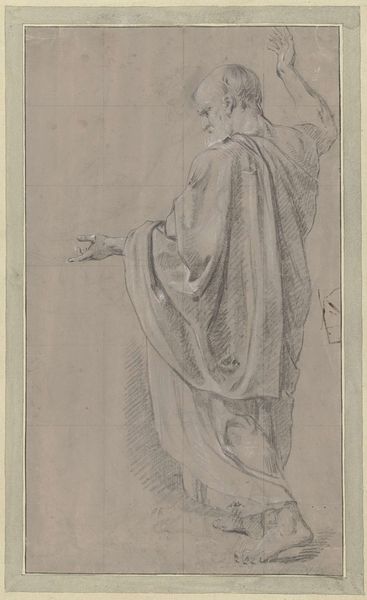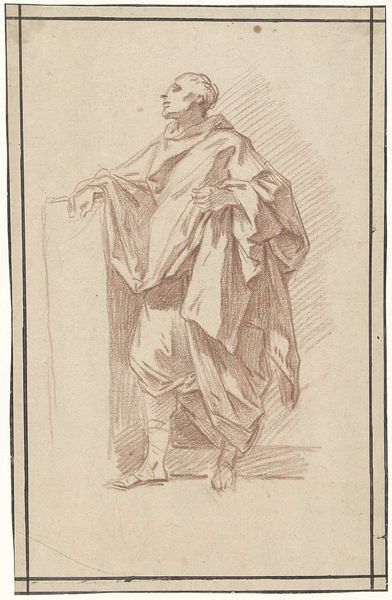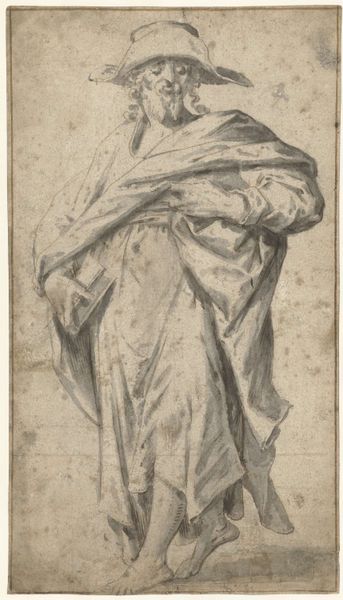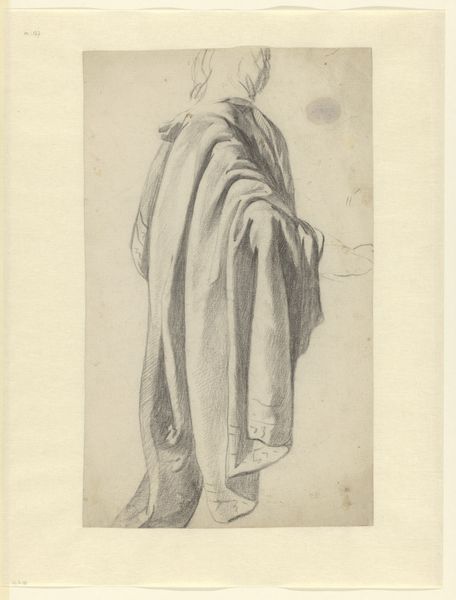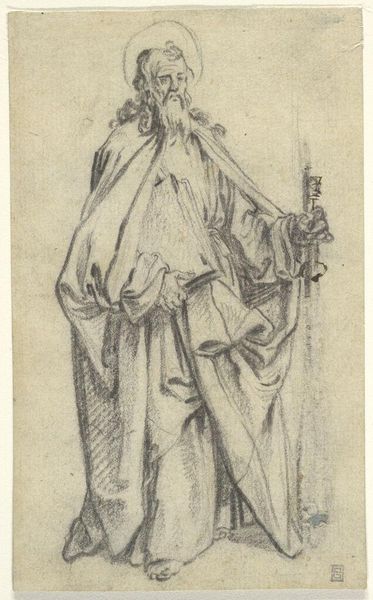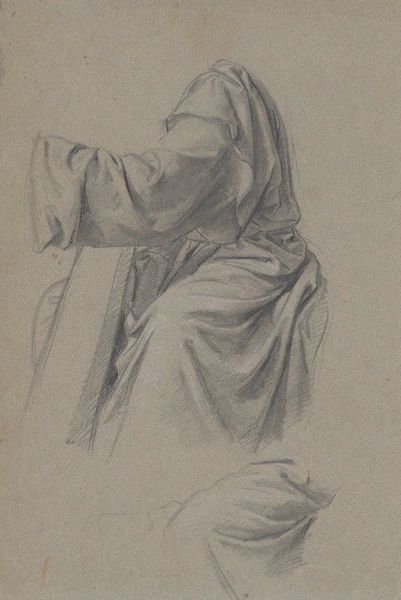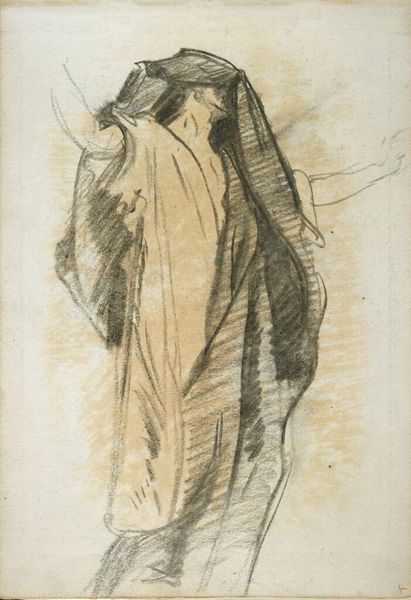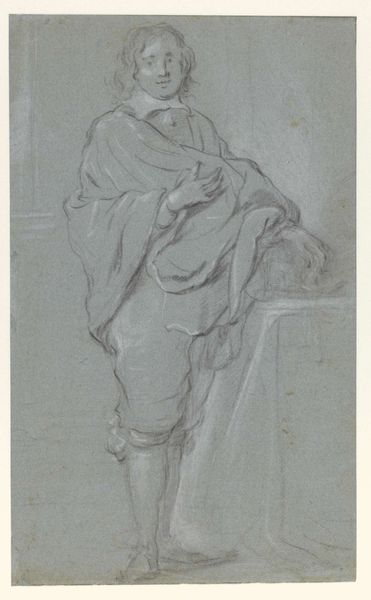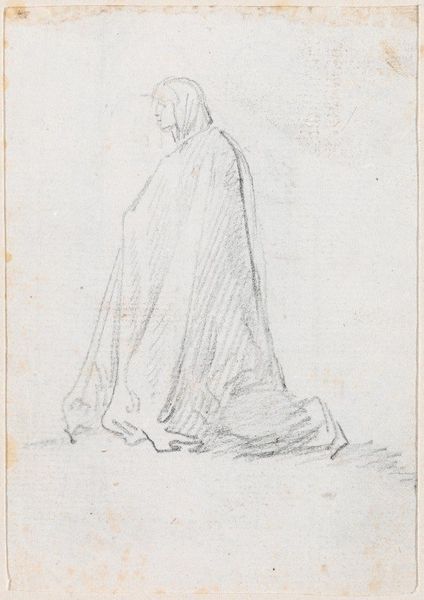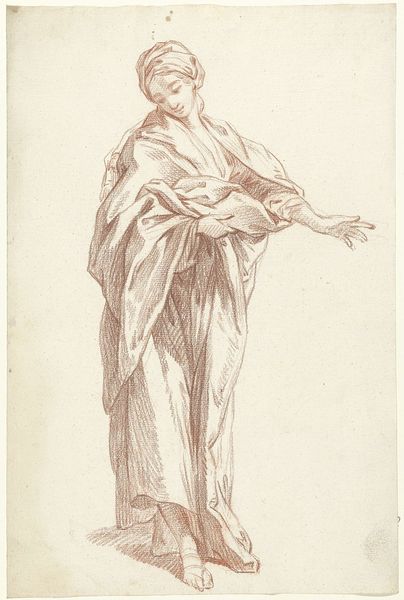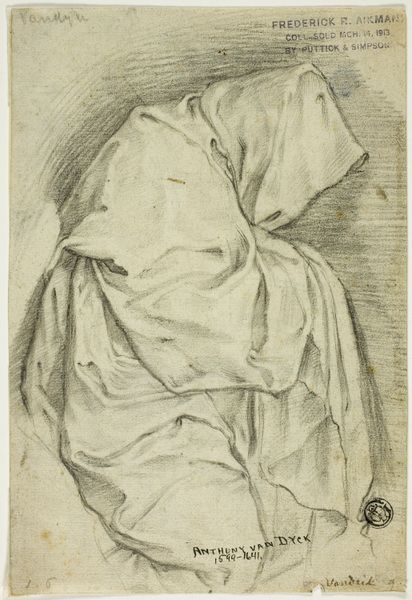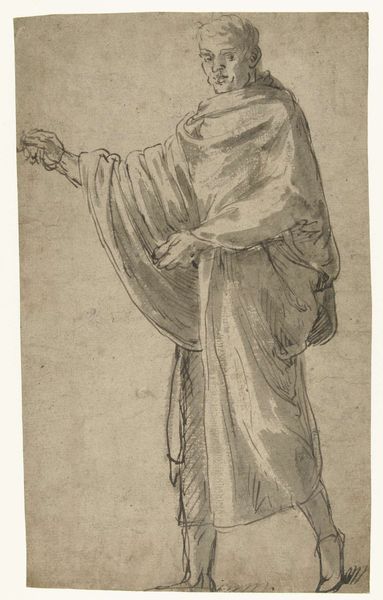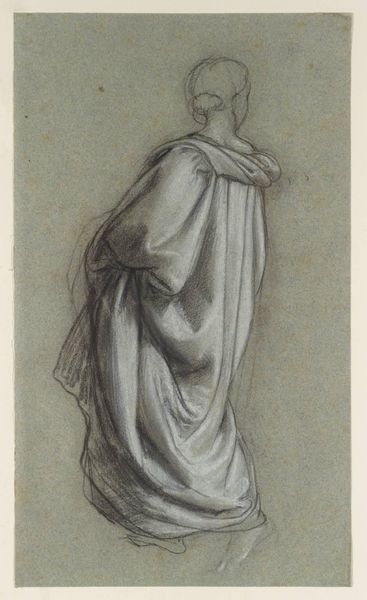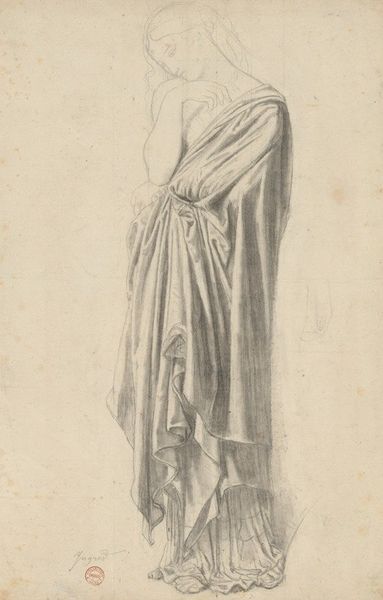
drawing, paper, pencil
#
portrait
#
pencil drawn
#
drawing
#
baroque
#
figuration
#
paper
#
form
#
pencil drawing
#
pencil
#
line
#
portrait drawing
#
genre-painting
#
academic-art
Dimensions: height 299 mm, width 174 mm
Copyright: Rijks Museum: Open Domain
Editor: This is "Biddende vrouw, naar links in profiel" – "Praying woman, profile to the left" – a pencil drawing on paper by Jacob de Wit, dating from sometime between 1705 and 1754. It’s quite moving; there's something very vulnerable about her posture. What strikes you most about this piece? Curator: It's intriguing how de Wit presents piety. This wasn’t simply an image of religious devotion; it's about *staging* religious sentiment. Consider where this image might have circulated - perhaps as a preparatory sketch for a larger, public altarpiece. The public consumption of Baroque art demanded a specific kind of emotionally charged imagery, didn’t it? Editor: So, you're saying that the artist's intent might be different depending on where and for whom the artwork was meant? Curator: Precisely. The Baroque period witnessed a complex interplay between religious institutions, the aristocracy and the rising merchant class. De Wit had to satisfy particular societal needs to succeed. Notice how he uses the play of light and shadow to almost theatrical effect? Is this genuine humility, or a carefully constructed performance for an audience, both earthly and divine? Editor: I see what you mean. The figure almost feels like an actress on stage. Could the clothing or the facial expression suggest clues to this woman’s place in that society, or the specific message of faith de Wit aimed to depict? Curator: The simplicity of her clothing speaks to humility, of course, but it also resonates with artistic conventions of the time. De Wit consciously situated himself within a lineage of artists who portrayed religious subjects. He was referencing tradition as much as depicting reality. How effective do you think it would have been? Editor: That's fascinating; I hadn’t considered how self-aware artists of that period had to be. Now I am viewing this piece differently; from pure feeling to calculated message. Curator: Exactly, seeing art in the context in which it was created will unveil so much richness in art history!
Comments
No comments
Be the first to comment and join the conversation on the ultimate creative platform.
